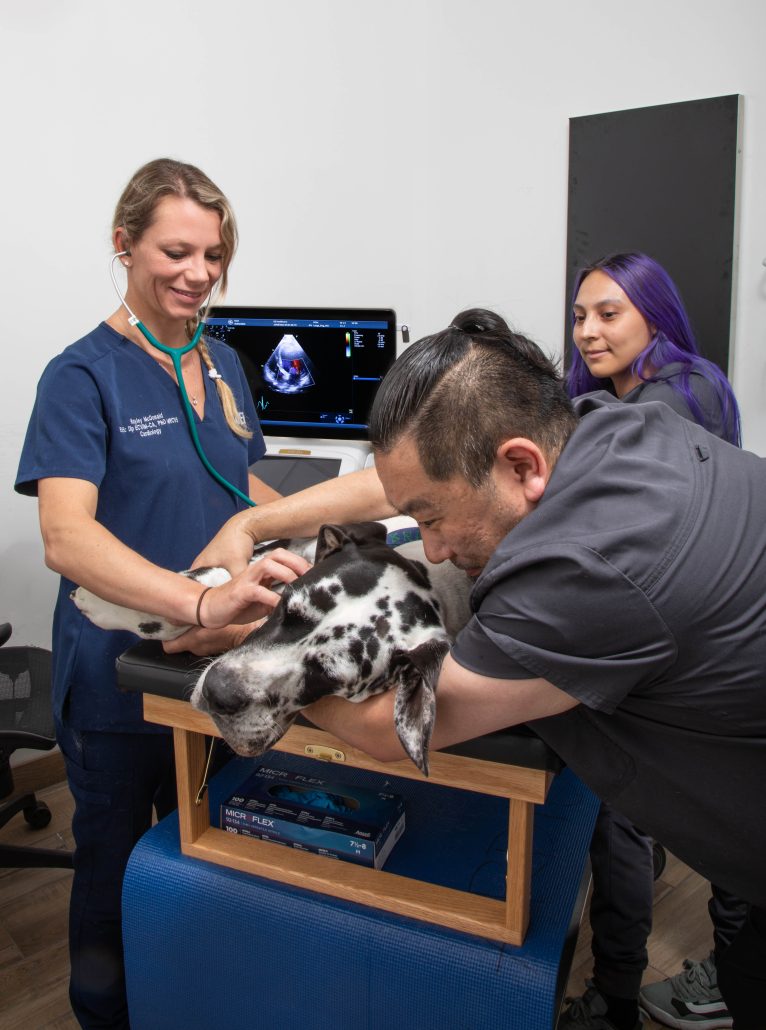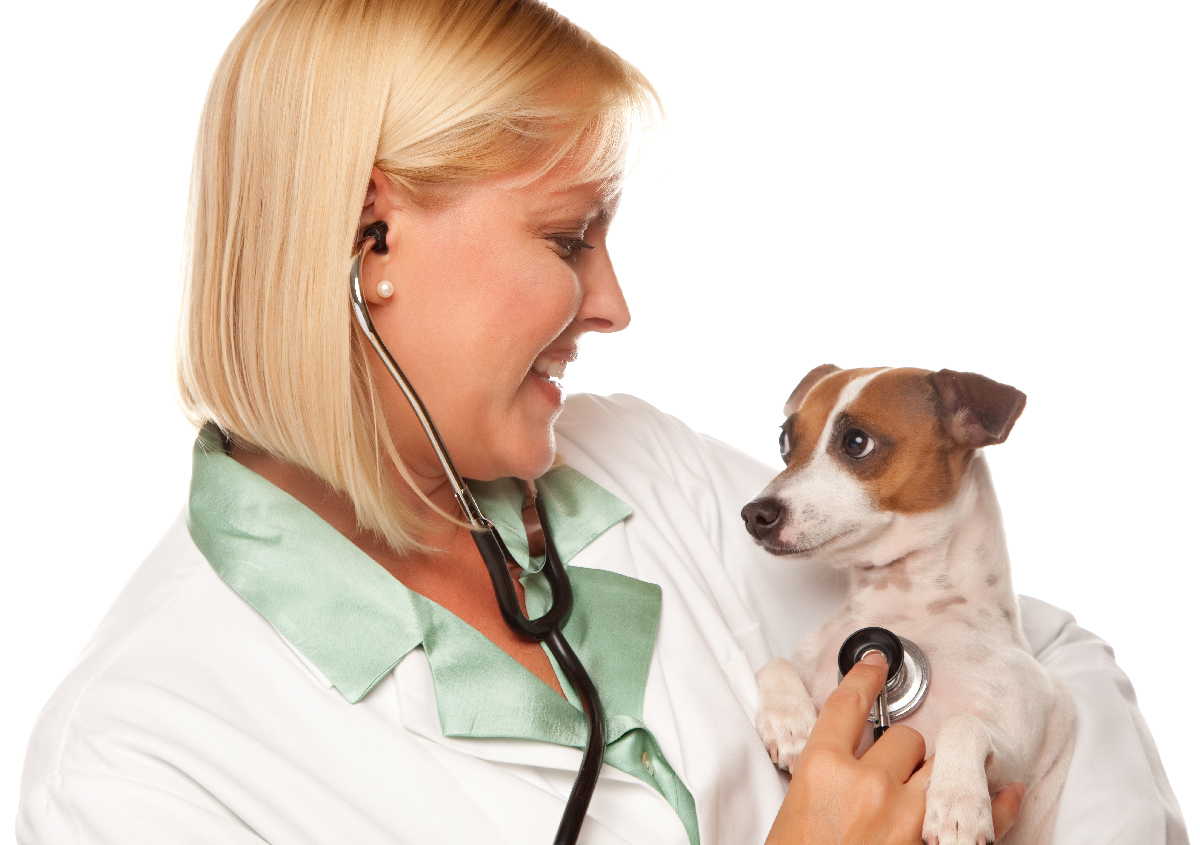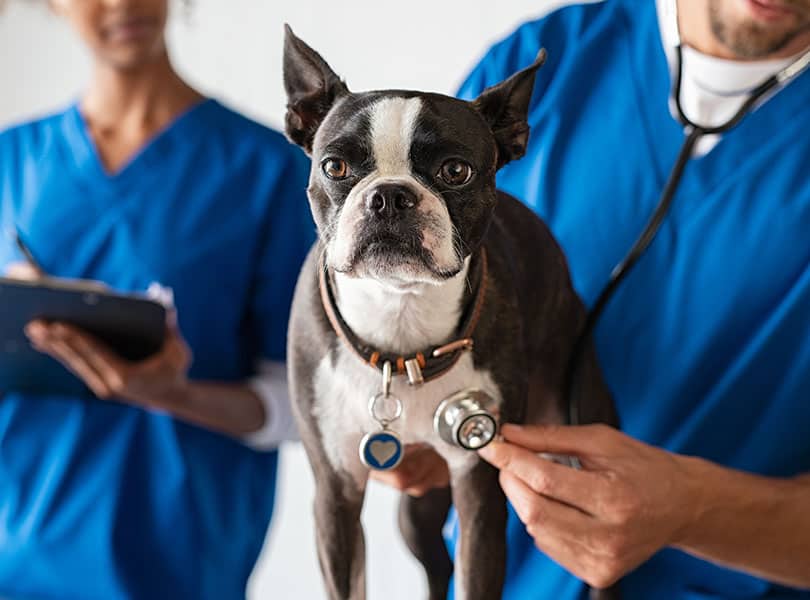What You Need to Find Out About Veterinary Services: A Review of Diagnostic Tools and Procedures
Veterinary services play an important role in keeping the health of animals. Routine check-ups can disclose surprise wellness issues early. Various analysis devices and procedures, such as blood tests and imaging techniques, provide vital understandings right into an animal's well-being. Understanding these methods is vital for pet owners. What specific analysis treatments are most commonly made use of, and exactly how can they affect an animal's therapy strategy?
Relevance of Regular Vet Examinations
While many pet owners might take too lightly the importance of routine vet examinations, these visits are essential for maintaining a pet's overall health. Routine check outs to the vet allow for very early detection of potential wellness concerns prior to they intensify right into major problems. Routine examinations commonly consist of inoculations, which are essential for preventing transmittable conditions that could significantly influence a pet's wellness. In addition, these appointments supply a chance for veterinarians to analyze the animal's weight, oral health, and overall problem, guaranteeing that the family pet is prospering. Throughout these visits, animal proprietors can also obtain beneficial recommendations on diet plan, exercise, and preventative care customized to their certain pet's needs.
Common Analysis Procedures in Veterinary Medicine
In vet medicine, exact diagnosis is important for effective therapy. Typical diagnostic treatments include blood screening strategies, progressed imaging modern technologies, and urinalysis, each playing a significant role in recognizing health and wellness issues. Comprehending these approaches boosts the capacity to give suitable take care of pet individuals.
Blood Evaluating Methods
Blood testing strategies act as crucial diagnostic devices in veterinary medicine, enabling vets to analyze the health of pets precisely. These methods entail collecting blood examples to assess numerous components, such as red and white blood cells, platelets, and biochemical markers. Common tests include full blood counts (CBC), which examine general health and wellness and spot infections, and biochemical panels, which examine body organ function and metabolic condition. In addition, serological tests can identify specific conditions through antibody discovery. Blood testing is minimally invasive and supplies essential details that helps in detecting conditions, monitoring health and wellness status, and evaluating feedbacks to treatments. Overall, these strategies play a crucial function in making sure excellent treatment for pet dogs and livestock alike.
Imaging Technologies Made Use Of
Diagnostic imaging innovations are vital tools in veterinary medication, matching blood screening strategies by supplying aesthetic insights into a pet's inner structures. Usual imaging methods include X-rays, which work for examining bone cracks and identifying foreign items, and ultrasound, which enables real-time visualization of soft cells and body organs. Magnetic resonance imaging (MRI) provides in-depth photos of intricate physiological locations, especially in neurological analyses. Calculated tomography (CT) offers cross-sectional images, enhancing diagnostic accuracy for numerous problems. Each of these technologies aids veterinarians in diagnosing ailments, planning therapies, and keeping track of healing. By incorporating imaging innovations, vet experts can better assess an animal's health and wellness and make informed choices concerning their treatment.
Urinalysis and Diagnostics
Urinalysis offers as a crucial diagnostic device in veterinary medicine, offering beneficial understandings into an animal's total health and wellness and assisting in the discovery of various problems. This non-invasive treatment evaluates pee samples to examine kidney feature, hydration standing, and metabolic conditions. Usual elements analyzed include details gravity, pH degrees, sugar, healthy proteins, and the presence of blood or germs. Unusual findings can show issues such as urinary tract infections, diabetes mellitus, or kidney disease. To boost analysis accuracy, urinalysis is frequently performed along with various other examinations, such as blood work and imaging studies. Early detection via urinalysis can cause prompt treatments, enhancing the diagnosis for several vet people. It is an essential aspect of extensive veterinary care.
Understanding Blood Tests and Lab Evaluation
Recognizing blood tests and research laboratory analysis is essential in vet medication as it aids in diagnosing various health conditions in pets. Different sorts of blood tests offer essential details concerning a pet's inner state, while analyzing lab results requires mindful factor to consider of many factors. This section will check out the sorts of blood tests readily available and the importance of their results.
Types of Blood Examinations
Blood tests play a vital duty in vet medicine, giving important insights right into a pet's health standing. Numerous kinds of blood tests are utilized, each offering various purposes. Full blood counts (CBC) examine general health and discover problems such as anemia or infection. Biochemical profiles assess organ function by measuring enzymes and electrolytes, supplying understandings right into metabolic wellness. Serological examinations determine particular antibodies or pathogens, helping in the diagnosis of infections or autoimmune conditions. Blood keying assurances secure transfusions, while coagulation examinations determine the blood's capacity to embolisms, vital for surgical procedures. These examinations jointly enhance diagnosis, treatment preparation, and surveillance of an animal's health and wellness, showing the relevance of complete lab evaluation in vet care.

Translating Lab Results
An extensive analysis of laboratory results is necessary for precise medical diagnosis and treatment in veterinary medication. Interpreting lab results needs an understanding of normal reference ranges and the significance of inconsistencies. Blood examinations can reveal various wellness indications, such as body organ function, electrolyte balance, and the presence of infections. Vets have to take into consideration the entire clinical photo, consisting of the animal's background, physical exam searchings for, and any kind of signs presented. Variants in outcomes may emerge from elements such as age, breed, and underlying health and wellness problems. Lab outcomes ought to not be watched in seclusion but instead as component of an all-encompassing analysis approach. Accurate interpretation enables customized therapy strategies and far better results for veterinary patients.
Imaging Techniques: X-rays, Ultrasounds, and Beyond
Imaging techniques are crucial devices in vet medication, giving essential understandings into the health and wellness of animals. Among one of the most frequently utilized methods are Ultrasounds and x-rays. X-rays are important for envisioning bone structures, assisting vets determine fractures, tumors, or international things. This technique is fast and non-invasive, making it excellent for urgent situations.Ultrasounds, on the various other hand, use sound waves to develop photos of soft cells and organs. This technique is specifically valuable for analyzing the heart, abdominal area, and reproductive body organs, allowing vets to assess conditions like liquid accumulation or organ abnormalities.Beyond X-rays and ultrasounds, progressed imaging strategies such as computed tomography (CT) and magnetic vibration imaging (MRI) are significantly made use of in vet method. These approaches supply in-depth cross-sectional photos, boosting the precision of diagnoses and treatment plans. Cancer Veterinary Near Me. In general, imaging methods play an essential duty in making sure efficient veterinary care
The Duty of Biopsies in Diagnosing Pet Dog Health Issues
Precision in detecting wellness issues in animals often pivots on making use of biopsies, which provide definitive information regarding cells problems. A biopsy entails the removal of a small example of tissue for assessment under a microscopic lense, enabling veterinarians link to determine various problems, consisting of infections, lumps, and inflammatory conditions. This diagnostic device is necessary for identifying in between benign and malignant growths, leading therapy choices, and evaluating the extent of a condition.Biopsies can be done using various techniques, such as needle aspiration, incisional biopsies, or excisional biopsies, depending on the area and kind of cells entailed. The option of method might impact healing time and the amount of tissue accumulated. Eventually, the info amassed from a biopsy can result in targeted therapies, boosting end results for pet dogs encountering serious health obstacles. Vets highlight the significance of this procedure in accomplishing precise medical diagnoses and effective treatment strategies.
Advanced Diagnostic Devices: Endoscopy and CT Scans

Advanced analysis devices, such as endoscopy and CT scans, play an essential role in modern-day veterinary medication, supplying non-invasive approaches to envision inner frameworks and detect various conditions in family pets. Endoscopy involves making use of an adaptable tube outfitted with an electronic camera, allowing vets to check out the intestinal tract and breathing system straight. This technique can reveal irregularities such as growths, international bodies, or inflammation, enabling targeted therapy plans.CT navigate to this website scans, on the other hand, make use of innovative imaging modern technology to create in-depth cross-sectional images of the body (CT Scans For Animals). This method is especially useful for evaluating facility frameworks like the mind, back, and joints. By supplying high-resolution images, CT scans help veterinarians in recognizing issues that may not be apparent through standard radiography. With each other, these innovative devices improve analysis accuracy, improve therapy end results, and inevitably add to far better total pet health management

Translating Test Outcomes: What Pet Dog Owners Ought To Know
Understanding test outcomes can be a tough job for pet proprietors, specifically after advanced treatments like endoscopy and CT scans have been performed. Analyzing these results requires an understanding of medical terms and a clear understanding of what the searchings for show about the family pet's health. Vets typically offer explanations, but the intricacy of the outcomes can still bring about confusion.Pet proprietors must actively involve in discussions with their veterinarians, asking concerns to make clear any kind of uncertainties. It is necessary to comprehend normal versus irregular outcomes and the ramifications for the family pet's treatment strategy. In addition, recognizing that some results may need more screening or monitoring can aid proprietors remain educated concerning their family pet's health and wellness journey. Eventually, a collaborative approach in between pet proprietors and veterinary experts cultivates far better health and wellness results and boosts the total care experience for family pets.
Regularly Asked Inquiries
How Do I Pick the Right Vet Facility for My Animal?
Selecting the ideal vet center includes investigating local alternatives, evaluating qualifications, going to centers, and assessing staff communications (CT Scans For Dogs). Focusing on suggestions from trusted sources can help ensure the most effective treatment and atmosphere for a pet's wellness demands
What Should I Do if My Family Pet Declines to head to the Veterinarian?
When a pet dog declines to head to the vet, it's recommended to stay tranquil, usage deals with or toys to lure them, and take into consideration setting up a home see if stress and anxiety continues. Persistence and favorable support are key.
Exist Telehealth Options for Veterinary Solutions?
Telehealth alternatives for veterinary solutions are progressively this website offered, enabling family pet owners to consult with vets from another location. These solutions enable conversations about wellness issues, suggestions on small conditions, and follow-ups without requiring to visit a facility.
Just how Frequently Should My Animal Have Dental Exams?
The regularity of dental check-ups for pets normally depends upon their age and breed. Usually, veterinarians advise yearly oral evaluations, although some animals might require even more regular brows through to keep perfect oral health and wellness.

What Are the Prices Connected With Vet Diagnostics?
The costs related to veterinary diagnostics can differ widely, normally ranging from fundamental tests like blood job to sophisticated imaging techniques. Factors affecting expenses include the facility's area, devices utilized, and details examinations needed for each and every pet dog. Veterinary solutions play a crucial role in maintaining the wellness of family pets. While many animal owners may underestimate the significance of normal veterinary check-ups, these appointments are necessary for preserving a pet's total wellness. Additionally, these visits supply a possibility for veterinarians to evaluate the pet's weight, oral health and wellness, and overall condition, ensuring that the pet is growing. Accuracy in diagnosing health and wellness issues in family pets commonly pivots on the use of biopsies, which supply definitive information regarding cells problems. Additionally, identifying that some outcomes might need additional screening or tracking can aid proprietors remain informed concerning their animal's health trip.